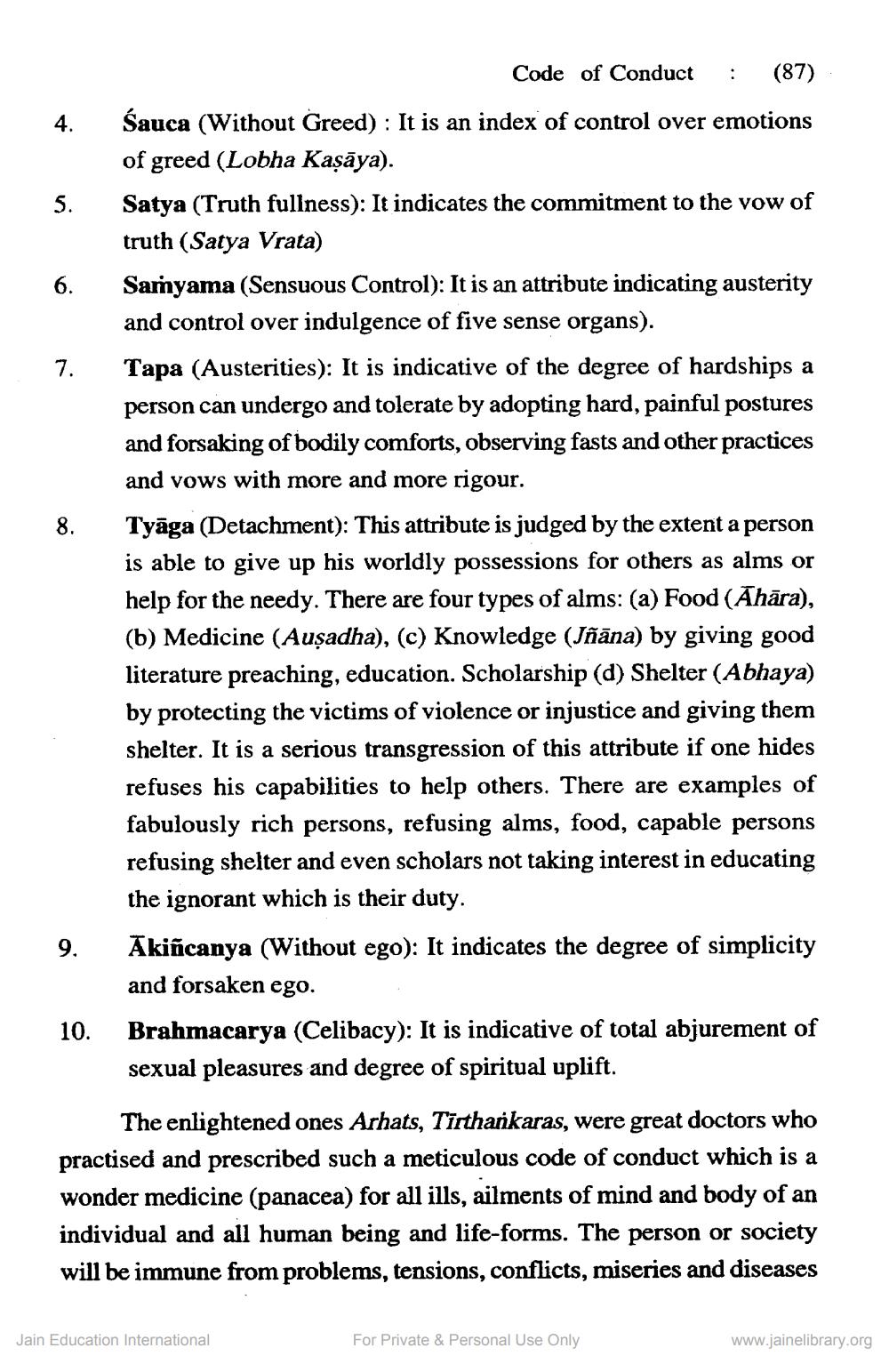________________
4.
5.
6.
7.
8.
9.
10.
Code of Conduct 4:
(87)
Śauca (Without Greed): It is an index of control over emotions
of greed (Lobha Kaṣāya).
Satya (Truth fullness): It indicates the commitment to the vow of truth (Satya Vrata)
Samyama (Sensuous Control): It is an attribute indicating austerity and control over indulgence of five sense organs).
Tapa (Austerities): It is indicative of the degree of hardships a person can undergo and tolerate by adopting hard, painful postures and forsaking of bodily comforts, observing fasts and other practices and vows with more and more rigour.
Tyaga (Detachment): This attribute is judged by the extent a person is able to give up his worldly possessions for others as alms or help for the needy. There are four types of alms: (a) Food (Ahāra), (b) Medicine (Auṣadha), (c) Knowledge (Jñāna) by giving good literature preaching, education. Scholarship (d) Shelter (Abhaya) by protecting the victims of violence or injustice and giving them shelter. It is a serious transgression of this attribute if one hides refuses his capabilities to help others. There are examples of fabulously rich persons, refusing alms, food, capable persons refusing shelter and even scholars not taking interest in educating the ignorant which is their duty.
Akiñcanya (Without ego): It indicates the degree of simplicity and forsaken ego.
Brahmacarya (Celibacy): It is indicative of total abjurement of sexual pleasures and degree of spiritual uplift.
The enlightened ones Arhats, Tirthankaras, were great doctors who practised and prescribed such a meticulous code of conduct which is a wonder medicine (panacea) for all ills, ailments of mind and body of an individual and all human being and life-forms. The person or society will be immune from problems, tensions, conflicts, miseries and diseases
Jain Education International
For Private & Personal Use Only
www.jainelibrary.org




